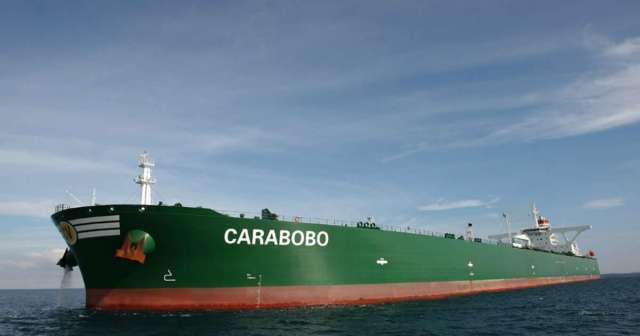
Hegovernment of Venezuela increased shipmentsRaw oil and fuelsCuba during the month of October, after a rebound in its monthly production and exports.
In the tenth month of the year 2021, the parastatal Petróleos de Venezuela (Petróleos de Venezuela) arrived on the island.PDVSA) sent 66 thousand barrels of oil per day (bpd), eight thousand more than in the month of September, when the company faced the worst drop in its exports this past year, according to Reuters.
Exports from PDVSA and its joint ventures in the month just ended exceeded 700 thousand bpd, almost double what was sold in September thanks to the fact that one of its most important allies, Iran, began to regularly supply them with condensate to dilute extra-heavy oil. of the Orinoco Belt.
In October, PDVSA and its joint ventures shipped a total of 30 shipments of crude oil and refined products, mainly to Asia, including a shipment of two million barrels of Merey heavy crude oil to pay Iran for the condensate received.
Venezuelan hydrocarbon exports averaged 711,193 bpd in October, the third highest average so far this year, which represented an increase of 76% since September, when an acute shortage of diluents forced PDVSA to cut production and mix.
This jump also had an impact on exports to Cuba, which managed to be a little higher than those of September, when they arrived on the Island. 58 mil bpd; those of August, with40,000 bpd of crude oil and residual products for electricity generation and those of July,that approached 63,400 bpd.
However, during these months the blackouts have not ceased to be present in the daily lives of Cubans. Nor the queues and shortages of nationally produced food, equally dependent on the availability of fuel for its commercial production and distribution.
Although the island's authorities blame thermoelectric plant breakdowns as the main cause of the blackouts, oil is the main fuel for electricity generation in the country, and its import is decisive for the functioning of the national electrical system.
89.7 percent of electricity generation on the Island depends on this fossil fuel. Only eight percent is made with gas; while renewable sources as a whole only represented 2.3%, according to data from the National Office of Statistics and Information of Cuba.
Almost half of the electricity generation power (40.6%) is produced in the eight thermoelectric plants that exist in the country, which have 19 blocks in operation. The rest is guaranteed with the diesel engine blocks installed in all the provinces of the Island.
What do you think?
SEE COMMENTS (1)Filed in:






